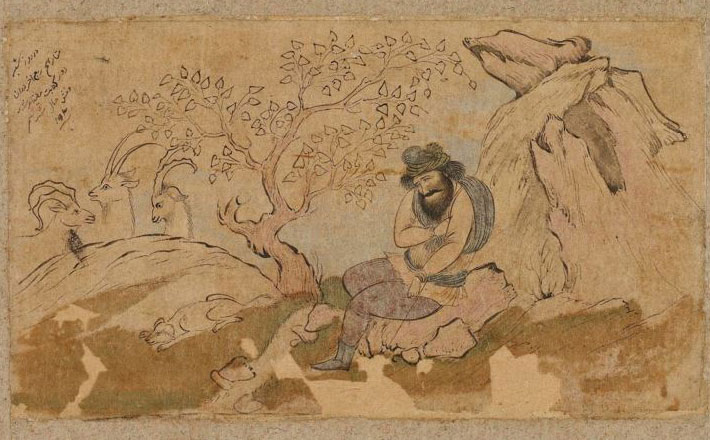Commentary on Revelation 7:9-17
The theology of baptism is given depth of meaning in the book of Revelation, especially in chapter 7:9 – 17 and in this chapter, the reader is drawn to the central message of being a Christian and that is the sealing of the saints.
Revelation calls Christians to remember that they are not sealed or baptized from challenges of life but rather we are made ready to go through whatever comes against us in our faith journey. In other words, baptism does not exempt us from sickness, betrayals, wars and other calamities but our participation in it signals God’s presence in and around our lives through and beyond this life. The tension between the so – called “already,” and “not yet,” eschatology orients readers of Revelation to a life in the between times.1 In these times, God’s faithful witnesses are gathered from every part of the world and they form what Revelation calls the “Israel of God,” sealed in 7:4 and are from every nation and tribe and people and language (7:9). Theologically, Revelation uses the term “Israel of God,” to refer to the ecclesial faith community and this is inclusive of all nations, races, ethnicities, tribes and languages from all over the world.
Many Christians have asked about the nature of the Church in its eschatological and heavenly perspective, and that question is addressed in Revelation chapter 7 in where John informs readers of two kinds of churches, namely: the church militant, which is the one still on earth and the church triumphant, which the one in heaven where the ones who are dressed in white robes stand before the presence of the Almighty God and the Lamb (7:9, 13 – 14).2 The community of faith or the church on earth is given its full picture in the number 144, 000 which in theological terms is the church triumphant made up of an incalculable number of all global Christians. Chapter seven is like a movie whereby the audience is held in suspense until the true genre is revealed. In the midst of persecution such as the recent killing of Christians in Iraqi, Libya and Syria and other parts of the world, chapter 7 reminds believers that God will always protect His people and this security is hidden from humanity because the mystery of death and God’s presence in the chaos of life is unfathomable. The lesson we can learn from chapter 7 is that in persecution, the reality of God’s protection on the faithful is authentic and real.
The sealed number of God’s people in 7:4 that John is made to see is indeed the ‘triumphant church,’ whose voices proclaims God’s action of deliverance. In fact, their loud voices can also be interpreted as a testimony of their salvation. Christians in the 21st century and living in affluent are probably shielded from persecution and have no knowledge of what ‘witnessing,’ implies. In the context of Revelation 7:10, the multitude claims God’s victory because they are martyrs who have shade their blood as a form of witness to Jesus Christ. Their celebration is not just for their salvation but they celebrate their triumphant passage through persecution.3 In other words, witnessing is not just claiming to be a Christian but it means triumphant participation through one’s own death and experiencing the sacrificial death of Jesus Christ. Christianity is about participation and throughout the New Testament Jesus is demonstrating authentic Christianity (John 13:3 – 5 cf. Matthew 26:14 -39). While many Christians want to go to heaven, many miss the point that before heaven, there is tribulation and going through this ordeal results in one being part of the celebrating triumphant Church in 7: 9 – 17.
The lesson is not that all Christians must shed blood as a form of testimony but rather, all Christians are candidates of tribulation in form or the other and in whatever comes their way, it is paramount to follow the Lamb’s way. The futuristic perspective of Revelation’s framework gives hope to Christians in that their present struggles determines their future with God, the Lamb and the Holy Spirit. Those who face their challenges with faith and trust in God are the ones who are participating and being washed in the blood of the Lamb and have been sealed by their baptism to go through all seasons in life. God does not hold his people in suspense but will always reveal to them their future; either in dreams and in real words of comfort, communion and prophecy.
The two pronged question raised by the elder to John is also the question for the present faith community: “Who are those robed in white, and where have they come from?” First, the elder informs John about the nature of the crowd as those who have come out of “the great ordeal,” this is the ordeal of tribulation and trial that God’s people go through. While John does not tell us that Jesus is part of the ordeal, interpreters must not miss the point that the Lamb was the harbinger of the ordeal, which the New Testament refers to as the life, death and Resurrection of Jesus. Paul calls it the ‘Christ-event,’ and this event happens to all God’s people. Jesus Christ is the heroic figure that fought opposition and God’s people are called to be heroic in all challenges of life. In the penultimate period as we wait for God’s coming, the community of faith is called upon to face terrorism, HIV/AIDS, hunger, wars, and any form evil with enduring faith as Jesus Christ did. The metaphor of being clothed is perhaps symbolic of the spiritual state of those who hold on to their faith in the midst of life’s chaos. It is probably a symbolic clothing of people by the Holy Spirit, as well as the blood of Jesus upon those who are captive to forces of evil and sin and are made worthy to stand before the throe of God (7:15), because of their endurance.
In conclusion, there are probably faith lessons we can learn in this chapter. First, the imagery of washing robes in the Lamb’s blood is symbolic aligning our life with the cause of Jesus Christ. When we follow in the footsteps of Jesus Christ, we become participants in his blood and we continue to worship before God’s throne in all we do and say (7:15). Verse 16 is of theological significance in that those who follow in the Lamb’s way are given the four promises by God who also sheltered or tabernacle the children of Israel when they passed through their own ordeal (Exodus 40:34-35; Isaiah 49:10). The crucial lesson to be learned in Revelation and in chapter 7 in particular is that God does not inflict pain on his people but he is compassionate and tender to all who believe and follow in the steps of the Lamb. Thus, Christians are called not to be comfortable in the distorted standard values of the contemporary empire but to always focus their joy on the coming heaven mentioned in Revelation 21 – 22.
Prayer: God help us not to settle into the values of our global contemporary empire and focus our eyes on the heavenly joys. Amen.
Notes:
1 Ian Boxall, The Revelation of Saint John: Black’s New Testament Commentaries (Peabody, M.A: Hendrickson, 2006), 121.
2 Eugene M. Boring, Revelation. Interpretation: A Commentary for Teaching and Preaching (Louisville: John Knox, 1988), 131.
3 See Baulkham, Theology of the Book of Revelation, 77


April 17, 2016